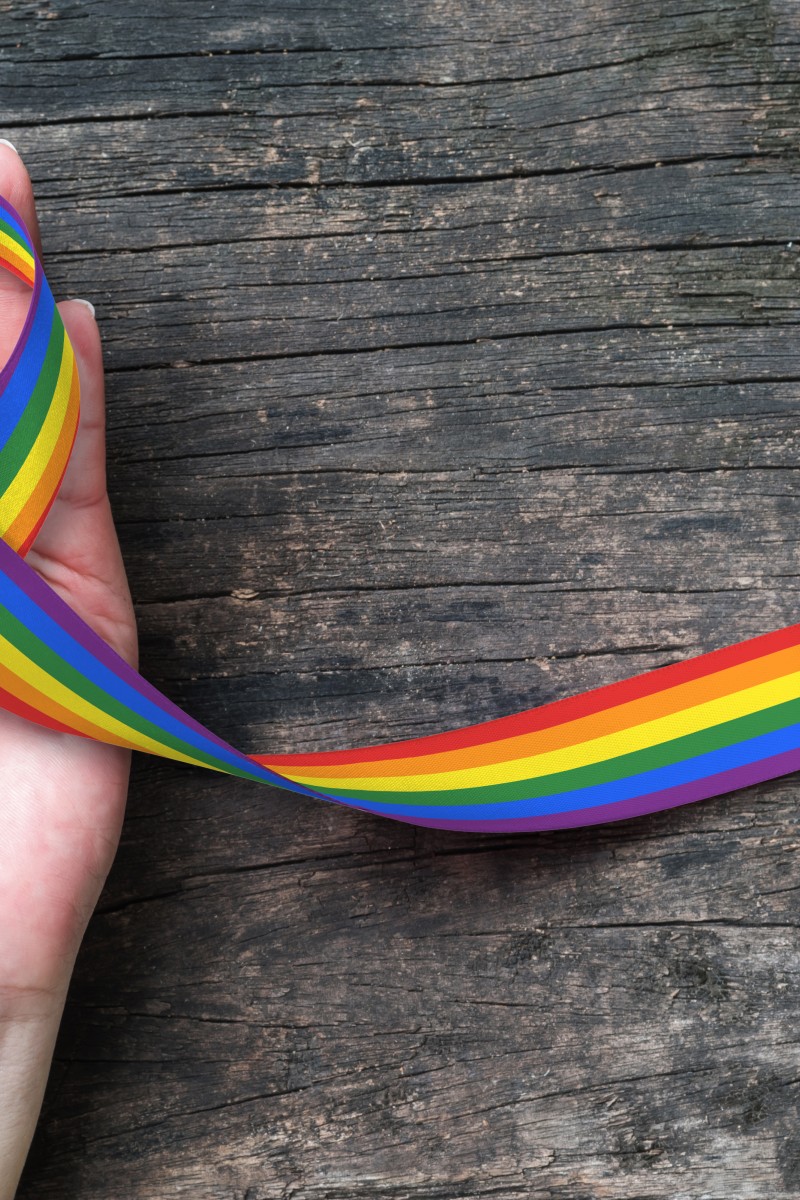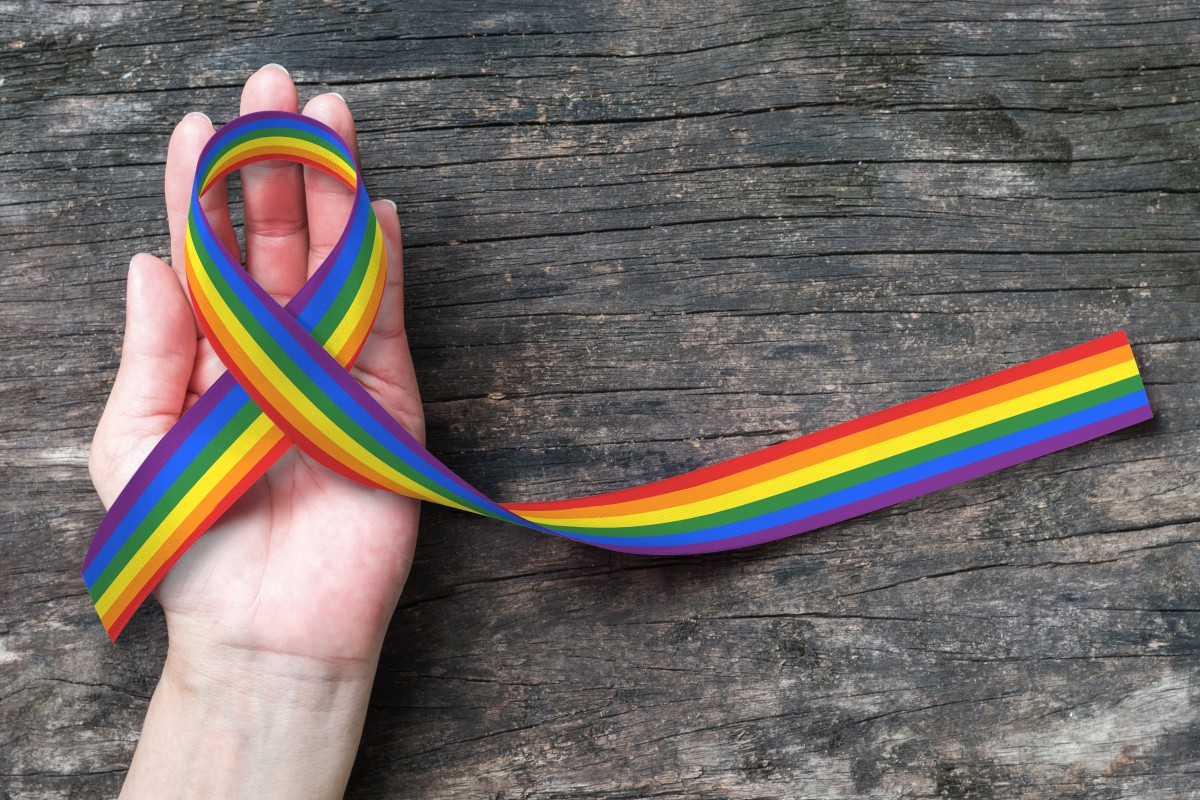
Growing Pains: LGBT teens, just be yourself; everyone else is already taken
Self-acceptance and developing a positive identity can be tricky, especially for LGBT teens; however, there is support out there to help you navigate this important life stage

Identity: I feel different
According to developmental psychologists, developing a healthy sense of sense and figuring out how we fit into society, is a fundamental stage in adolescence. Erik Erikson’s psychosocial theory (1968), suggests teenagers go through a stage of ‘crisis’, where they explore and form their sense of self and identity. This stage can (and often does) continue into adulthood. Ideally, people come out the other side of the ‘crisis’ with a healthy understanding of their own unique identity.
Identity covers many aspects, though most fit under the umbrella question of Who am I? For some people, coming to terms with who they are and forming a positive sense of identity can be challenging. This is especially true when who they are is not similar to those around them, or if they feel their true selves would not be accepted by those close to them.
For individuals who identify as LGBT (Lesbian, Gay, Bisexual, Transgender), or are questioning this facet of their personality, establishing a positive sense of self can sometimes be difficult and confronting. While this is not always the case (some LGBT people have been secure in their sexual or gender identities for a long time, and have many supportive people around them who understand and appreciate them for exactly who they are), it is unfortunately common that LGBT people struggle with developing a positive sense of self.
Case study
Hannah*, 17 years old, was very quiet when we first met. She had chosen to work with a counsellor, and yet held back whenever we spoke about anything that went beyond everyday, slightly shallow conversation. She was often sullen, and at times even monosyllabic in her responses. I thought perhaps that the match between her and me just wasn’t working for her, and this would have been ok. If she had felt the same, I would have suggested she try out a different counsellor. This can happen sometimes, and if you are working with a therapist and the ‘fit’ doesn’t seem right, don’t feel bad about trying to work with someone else. It’s important that you feel comfortable with whoever you’re opening up to.
As it turns out, the therapeutic relationship between us improved as we continued to work together. I soon discovered that Hannah’s reluctance to talk was less to do with me, and more to do with the fact she wasn’t even sure how to express how she was feeling. With a lot of time and patience, she told me that she had always felt like a boy, and yet she had a girl’s name, was treated ‘like a girl’ and looked very feminine.
It had taken years for Hannah to get to the point of realising something didn’t quite sit right for her, and it would take time for her to think through her feelings, educate herself and understand her issues better, and accept herself fully. The LGBT experience is completely unique for all individuals, and the tips below are by no means exhaustive. They are instead a starting point for anyone who wants to know more about developing healthy LGBT identities, whether this applies to you or someone you know.
*name has been changed
A path to develop a healthy LGBT identity
1.Educate yourself
This applies to all of us, whether or not we identify as LGBT. Understanding that there is no such thing as ‘normal’ and that the world is rich and interesting because we are all different, is vital to be able to accept ourselves and each other for all that we are.
People have loved other people, regardless of gender, and have felt they are a different sex to the gender they were assigned at birth, throughout history, in all different cultures. In some cultures, this has been revered, and in others it has been stigmatised.
Being gay or transexual is not a choice, and it’s not something a person can ‘catch’ or become due to influences around them. If this were the case, then people who were raised and educated purely by heterosexual and non-trans people would not be LGBT, which is not true.
Gender identity and sexuality are not the same thing. For example, a person assigned to the female gender but who identifies as male may be attracted to females, males, both or neither. This is the same for all people, whether trans or not. There is no rule to say who we might be attracted to.
Sex education in Hong Kong: the things you need to know but are too afraid to ask
There are many labels to describe sexual and gender identity. Transgender, non-binary, multi-gender, gender-fluid, pansexual, asexual and demi-sexual are just some terms that can be used. These labels can be helpful insofar as they help some people understand themselves better and feel they can belong to a wider group. They can also help, in terms of having appropriate names for groups that are not derogatory. However, it should be remembered that as with any label, none of these can fully describe or capture a person in their entirety. We are all multi-faceted, complex beings, and labels should not be used as a shortcut to understanding another person completely.
Understanding more about LGBT issues took Hannah some time, but was pivotal in her move to accept herself and her feelings. She realised she was not alone in feeling (as she saw it) ‘different’ and she started to feel less stuck and anguished about her situation.
2. Challenge homophobia, transphobia and all prejudice
Sometimes people can be unaware that they’re being offensive, while others are just plain rude and disrespectful. Either way, if you believe respecting all beings is important, then challenge prejudice when you hear it. At the very least, try not to be involved in prejudicial behaviour. This could be as simple as choosing not to laugh along with a homophobic, racist or misogynistic ‘joke’.
As well as external prejudice, some LGBT individuals experience internal homophobia or transphobia. This is when LGBT people absorb social comments they may have heard against the LGBT community, and as a result have feelings of guilt, confusion and a sense they are not ‘normal’. These feelings often lead to depression and low self-esteem, so must be challenged. Challenging thoughts is explored more in the ‘Thoughts’ column, but can be as simple as questioning where the thoughts originate from, and asking yourself whether this thought is helping you or hurting you.
3. Look for role models and make links with support groups
Happily, there are more LGBT role models out in the world than even five years ago. Celebrities and people in our everyday lives are speaking about their experiences and offering support to young people who might be struggling with their LGBT identity.
Reading about others’ experiences can be helpful, especially when they have overcome difficulties and come to accept themselves. Seeing positive images of LGBT communities can also be really helpful in building a positive understanding of diversity and acceptance.
Hannah was able to find a local support group for LGBT youth, and it was here that she first listened, then started opening up about her own experience. She felt safe in this group to be honest with others but more importantly, to be honest with herself, and so grew in confidence.
4. Counselling is an option
Hannah chose to speak first to a counsellor because she wanted to have a conversation that would be private and where she felt she would not be judged. Some schools have counsellors, but you should check what their confidentiality policy is first if this is important to you. Private counsellors are another option, but there will be a cost involved. There are also services available especially for LGBT individuals, and these details can be found in the box below.
5. Speak to an LGBT-friendly doctor
A good doctor should be able to support you emotionally, or refer you to another healthcare professional such as a psychologist, who will be able to offer you a safe space to explore your thoughts and feelings.
For some (but not all) trans people, seeking out treatment (such as hormone therapy) to transition from one sex to another, is a decision they come to after a lot of reflection and support from professionals. This is not a quick process, and isn’t one taken lightly, but can start with a conversation with your GP, or a GP you find who is knowledgable and understanding about LGBT concerns. Contact a resource from the box below for more information about how you might find such a professional.
6. When and if to ‘come out’
Coming out, that is, telling others about your sexual or gender identity, should only happen when you are comfortable with people knowing, and when you have reached some level of self-acceptance and self-awareness. ‘Outing’ people, which is when others share your identity with others without your permission, is never ok.
Coming out is a very personal decision. Often there is fear and stress around this, as people worry about discrimination, rejection, disapproval and even violence. Given this, it is important that you come out only when you want to, and that you do it in your own way. This might mean coming out in stages - so telling some people in your life and not others, and testing how you feel about sharing. The important thing is to do what feels right for you.
Hannah hadn’t told anyone about how she felt until she first spoke to me and then later joined an LGBT Youth support group. After a few months, she decided she wanted to talk to her mum. She was terrified her mum would be disappointed, but planned what she wanted to say and when she would have an uninterrupted sit-down chat with her mum. Not all chats go well, but Hannah was lucky and found that her mum was far more accepting and open-minded than she expected. She was really helpful in supporting Hannah to find more supports, and decided to join a group for parents of trans teens to further educate herself.
LGBT resources in Hong Kong
The Pink Alliance organises events, projects and provides education for LGBT issues in Hong Kong. They highlight work of other LGBT organisations, such as the ‘I am Me’ video project filmed in 2013:
Rainbow of Hong Kong is an LGBT organisation which advocates for equal rights of LGBT people, and promotes education. The public is able to access Rainbow’s library, which contains literature specific to the LGBT community. The organisation works with students at Hong Kong universities and collaborates with international LGBT organisation.
The Transgender Resource Center is an organisation providing Peer Support, Counselling, a Hotline and Parents Group for individuals in Hong Kong and mainland China.
If you, your family member or friend have queries on Gender orientation or identity, call the TGR hotline during service hours: +852 8230-0838 (Every Wednesday Night 8pm-10pm Except public holidays)
Complete the TGR registration form to access counselling for yourself or for your parents here.
Every week, we will look at one issue commonly faced by teenagers, which have come up in conversations with counsellors, and how to deal with them.
Natasha Warren-James is a counsellor for children and young adults, and holds an MSc in Psychology. She grew up in Europe, the Middle East and Hong Kong, and (for now) lives in sunny Australia.
